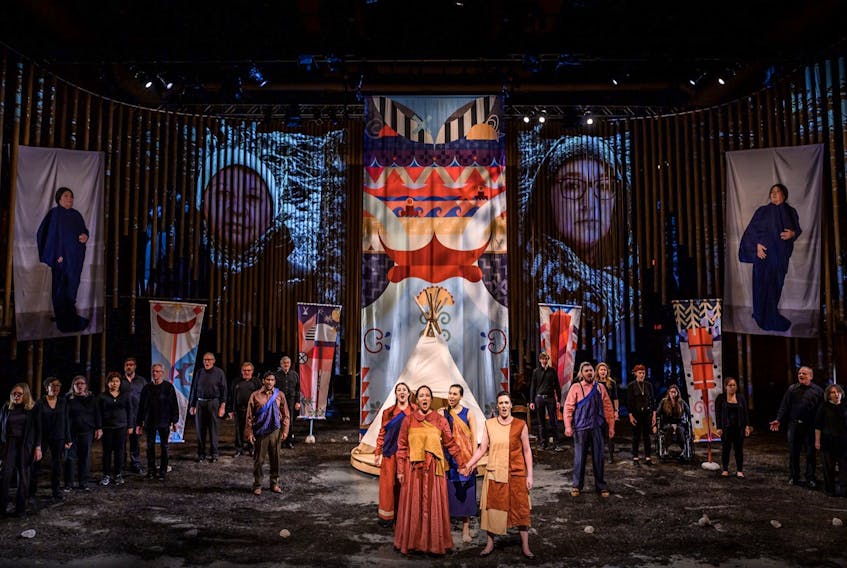Tapestry Opera and Opera on the Avalon brought their coproduction, “Shanawdithit” to St. John’s on June 21, as part of the Newfoundland and Labrador opera company's 10th festival season.
The opera — a musical theatre type of performance, though much more gripping and hard-hitting – made its world premiere at Toronto’s Imperial Oil Theatre on May 16, with six showings in nine days.
The St. John’s show coincided with a particular fitting date — National Indigenous People’s Day.
Local Elder Emma Reelis welcomed the audience with a prayer, land acknowledgment and a Ron Young poem about the protagonist.
Behind her, the stage was draped with fabric, which would act as a backdrop for projections throughout the show. Below the stage, the orchestra began the performance by imitating the sounds of wind howling through a forest. The music simulated elements of nature, like waves, rain and a crackling fire. The choir rested in the shadows, unseen but heard throughout.
In telling the story of Shanawdithit, the last recorded survivor of the Beothuk people in this province, the audience is reminded about the erasure of this woman and her peoples’ culture, traditions and lives.
It’s worth noting that while Shanawdithit’s name will ring a bell to many Newfoundlanders and Labradorians, most of us know only about her death, not her life – another example of erasure of Indigenous culture and traditions throughout history and the need to cover in-depth Indigenous history in our school systems.
In “Shanawdithit,” the audience is treated to a unique perspective of her life, especially her time as “Nancy April” — a “serviceable” first name followed by the month of her capture.
Marion Newman shines in the titular role, while Clarence Frazer performs quite well as the seemingly likable colonist William Cormack. The explorer is fascinated by the Beothuk people and wants to preserve their heritage, opting to take in Shanawdithit and work with her, instead of having her work for him as a maid, as her previous captor Judge Peyton had done.
Shanawdithit and Cormack’s time together resulted in a series of drawings — which serve as the basis of this opera and are featured as projections — showcasing her land, her people, and her emotions, like sadness, isolation and loss.
Her emotional disconnect is evident, as she laments about Cormack’s intentions. “How can I sing to the descendants I will never have,” she asks solemnly.
In seemingly dreamlike sequences, the audience learns not just of her contributions to recording an almost-lost part of history, but also of Shanawdithit’s family, like her aunt Demasduit – known as Mary March — and her culture and traditions.
Use of contemporary dance and large pieces of visual arts add to the already-electrifying show.
Creators Yvette Nolan and Dean Burry worked with Mi’kmaq artists, including Newfoundland and Labrador’s own Jerry Evans, Meagan Musseau and Jordan Bennett to create an informed show that aims to inform instead of sensationalizing a truly sensational story, in many senses of the word — astonishing, shocking, stirring, interesting, important, significant and historic.
“Do not tell the world only about our death,” Shanawdithit says in the show. “Tell them about our life.”
The creation of this opera aims to – and succeeds – in doing just that.
RELATED









